How to Credential?
Credentialing durable skills and core skills has yet to be solved at scale. To build capacity for an ecosystem-wide credentialing system, building blocks need to be in place—including articulating, designing, validating, badging and credentialing, documenting, and matching/aligning.
3.1 Marketplace
3.2 Articulating
3.3 Designing
3.4 Validating
3.5 Badging and Credentialing
3.6 Documenting
3.7 Matching and Aligning
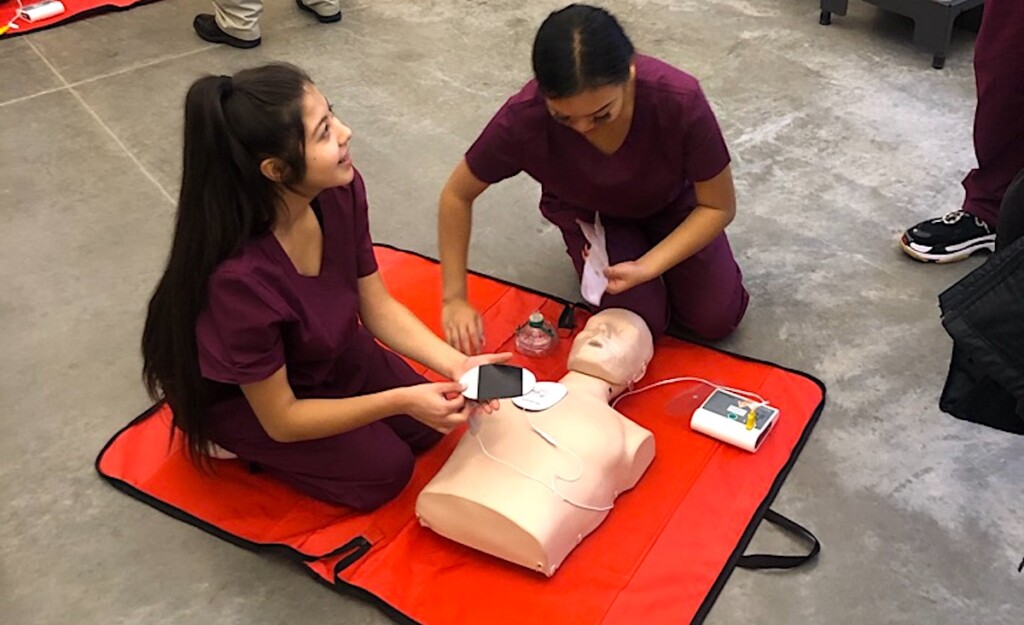
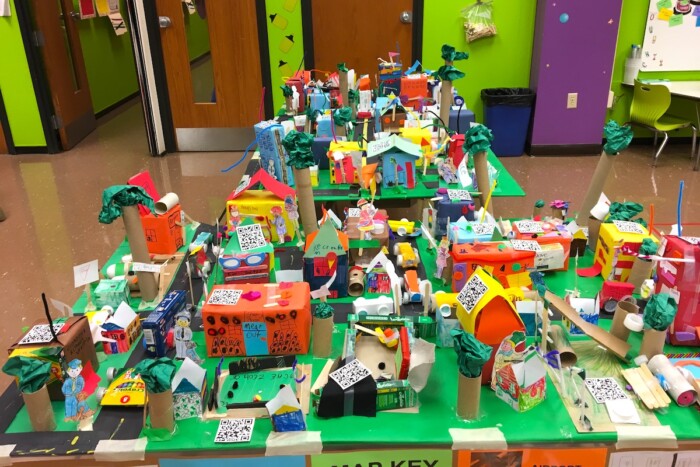
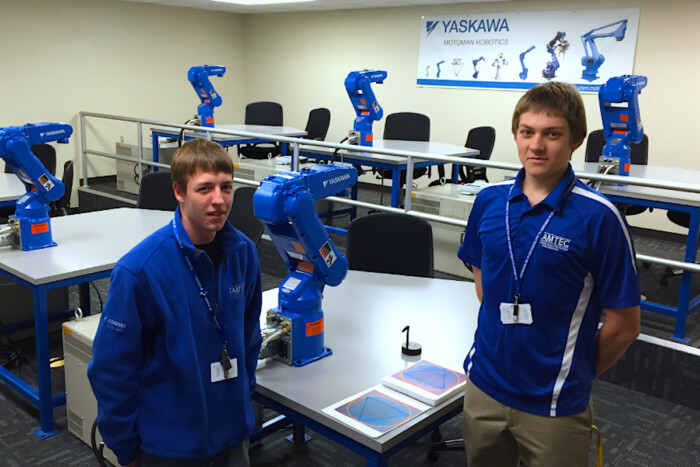
In typical credentialed experiences, the learner must pass an exam, complete practice hours, or both. This makes sense when the credential is sponsored by an outside organization. This is true in most CTE certification programs (e.g., the CNA certification) with a connected challenge that most certification programs are state-run. Credentialing durable skills and core skills has yet to be solved at scale. To build capacity for an ecosystem-wide credentialing system, building blocks need to be in place—including articulating, designing, validating, badging and credentialing, documenting, and matching/aligning. Even with these elements established, a valid marketplace must exist for the earned credentials to best serve the individual learner.
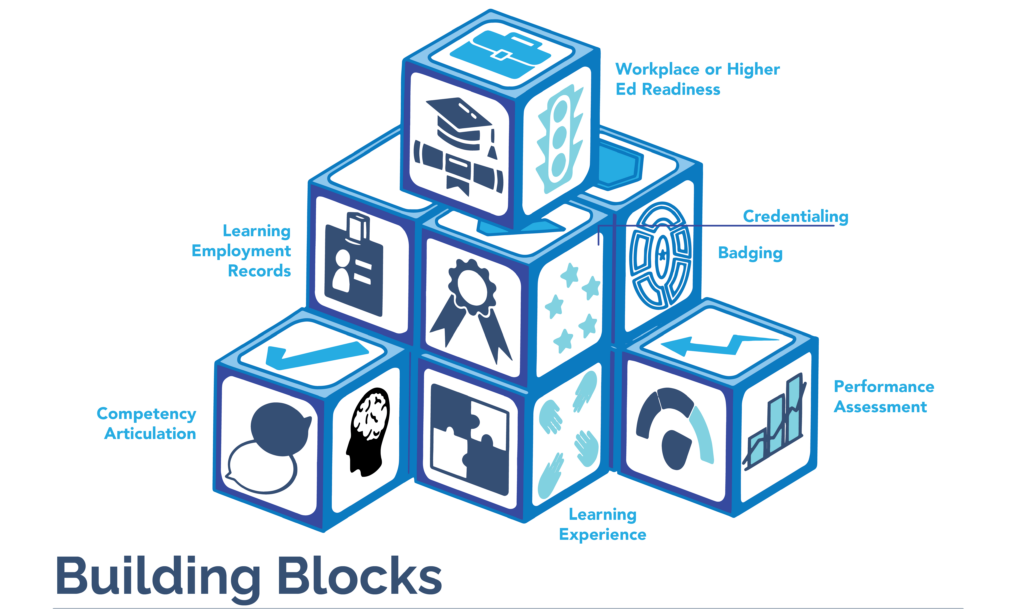
Marketplace
A credential marketplace is two-sided. Learners sit on the supply side by earning, storing, and sharing credentials that document their competency. On the demand side is the issuer/receiver. Either some form of higher/further education or the workplace can both issue and receive the credential from the learner. Efforts to eliminate barriers on both the learner side (what, how, and who can provide credentials) and the receiver side (seamlessly matching skills to need) accelerate the adoption of a fully credentialed learning ecosystem.
Articulating
To launch an effective landscape-level credentialing program, one possible first step is to determine what already exists and what to credential. Often this is driven by local and regional needs. Credential Engine works with states and regions to identify and curate all existing credentials (including diplomas, certificates, degrees, etc.). Based on the Perkins V funding legislation, states must complete a CTE Needs Assessment every two years to ensure that the CTE programs are aligned with regional economic needs (see, e.g., Colorado, New Mexico, Illinois). In addition to the Perkins V focus on technical competency credentialing, some regions have articulated the needed transferable competencies based on industry surveys. The DeBruce Foundation partnered with KCRising to build a set of transferable skills specific to Kansas City. While these skills are not yet credentialed, the vision is to incorporate these skills into high school learning experiences across the region.
When articulating the competencies that make up a credential, skills libraries can help with writing competencies and connected skill assertions in common language (Open Skills Management Tool (OSMT), Rich Skill Descriptors (RSDs), Open Competency Framework).
Designing
Once competencies are articulated, they must link to high-quality learning experiences. With technical competencies, learning pathways are aligned with industry credentialing evaluations. CTE curriculum is widely available for high school and/or community college partners to use for learning experiences. Increasingly, project-based learning approaches (PLTW, Defined Learning) have enhanced the pedagogy of CTE programs. Strong career-focused networks (Cristo Rey Network’s Corporate Work Study, NAF Career Academies, P-TECH Schools, CAPS Network) make it easier for any high school to implement a high-quality career-connected pathways program.
While core/basic competencies have well-developed standards (Common Core, NGSS, etc.), very few efforts have been made to link the standards to higher level core competencies and/or transferable competencies. Even less progress has been made to turn these competencies into Industry-Recognized Credentials (IRCs). The Alberta Ministry of Education has done a comprehensive crosswalk with their set of transferable competencies and core content competencies. ACT has built a National Career Readiness Certificate that covers some core and transferable competencies through successful completion of three WorkKeys Assessments. Oklahoma has built the NCRC credential into opportunities for high school students. Designing learning experiences that accurately teach and assess transferable competencies remains elusive and often separated from other “academic work.” Learning experiences linked to core competencies are abundant, but they remain stuck at the granularity of standards rather than encompassing a broad set of competencies that lead to a credential in, say, “Applied Mathematics,” “Data Science,” “Writing for the Digital Age,” etc.
Validating
The proxy for talent over the last century has been both the formal credential (high school or college degree) and the reputation of the credential issuer. Validation is limited to verifying that a degree came from an existing and accredited institution. But this proxy has not served employers well given the reported low competency level in both core and transferable skills. The challenge is how to validate the learner’s competency in order to award a credential. Technical competencies have achieved this through industry-regulated exams and observation/practicum hours. Oversight is often done by third-party organizations who offer the training to achieve proficiency on the technical competencies. This generally works as long as the learning experience is of high quality and the assessment is both valid and reliable.
However, validating transferable competencies and core competencies remains elusive. Proxies for core competencies are found in standardized tests delivered by all states and some national organizations. These are quite reliable in that they provide consistent results, but they are not valid descriptors of learner skills due to the modality of the assessment and the significant impact of non-school demographic factors.
High-quality assessment principles should be determined and shared by all who validate and award credentials. The Center for Collaborative Education articulates a Quality Performance Assessment Framework to aid in assessment design. In order to earn a credential, the learner must pass one of these high-quality Performance Assessments, where they must demonstrate the skill to show proficiency, for every competency making up that credential. America Succeeds has spent significant time researching and documenting the skills most needed by employers and cataloged the collection in their Durable Skills framework.
To ensure validity and reliability within proficiency determination on transferable competencies, a network of trust must exist within the system. Three levels of evaluation should be considered.
How Next-Generation Badging Improves Equitable Learning For All
A recent report from the Democratic Knowledge Project and Harvard Center for Ethics proposes a badging board for an added layer of verifiability.
Educator
Educators, as they do now, evaluate evidence submitted by learners and determine whether the learner meets the expectations of the competency.
Calibration
Schools can build site-level calibration systems to ensure reliability. Fidelity to the characteristics of high-quality performance assessments can be ensured by new or existing authorizing organizations who evaluate the quality of the credentialing program such as the International Council on Badges and Credentials, or as described in the Next-Gen Badging White Paper (above).
External
External to school sites, core and transferable competency evaluation could be done by moderation through cohorts of trained educators (see, e.g., the International Baccalaureate external/internal model) or external norm-referenced assessment, such as YouScience (focused on assessing technical competencies) and College and Career Readiness Assessment (focused on transferable competencies). In higher education, Territorium has partnered with ETS to offer an E-Proficiency Profile that measures college student core competencies.
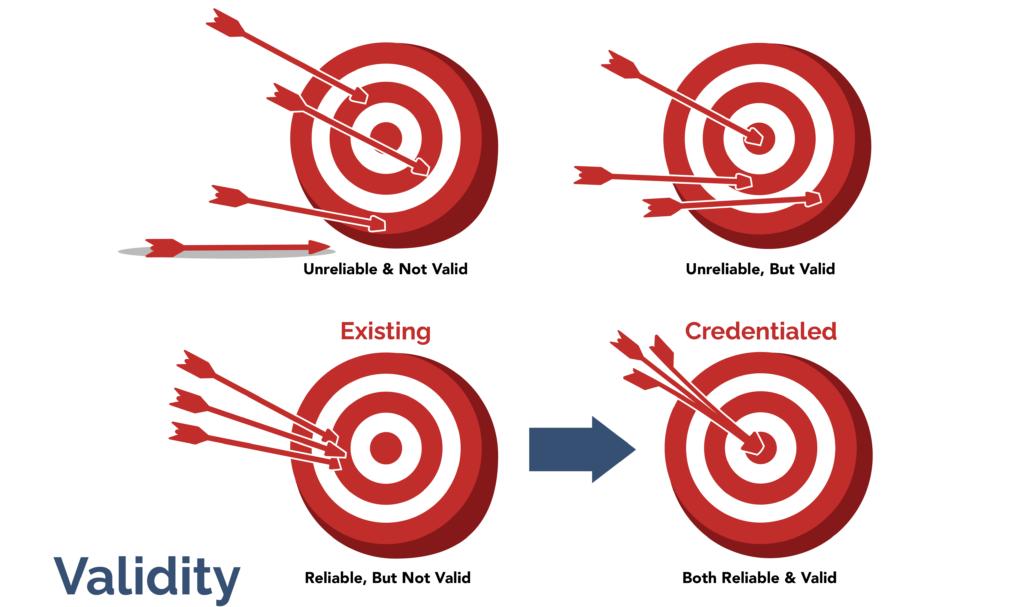
Badging and Credentialing
Once a student’s proficiency in a competency or set of competencies (also called outcomes, skills, etc.) is validated through high-quality performance assessments, a credential can be issued. Some issuers are using each badge as a way to mark proficiency in a competency and then stacking badges to equal a credential. Other issuers directly award a credential when a learner has successfully completed a performance assessment (and/or other examination or course completion approaches).
Badging
A number of technology companies offer the technical infrastructure to build a badging and credentialing program. These solutions focus on building, awarding, and sharing badges as determined by the host organization. Credly, OpenBadges, Badgr (now Canvas Credentials), and Accredible all provide fee-for-service badging solutions. Core requirements of badges include:
- Interoperable: Badges can be exported to other technology products with ease, and enables comparison and cross-reference to other badge metadata to detect duplication. The 1EdTech (formally IMSGlobal) Competencies and Academic Standards Exchange (CASE) program facilitates the transferability of badge and competency information across multiple frameworks. The U.S. Chamber of Commerce Foundation and the T3 Innovation Network built the Jobs and Employment Data Exchange (JEDx) to facilitate the alignment of skills and competencies within specific employment areas.
- Standards-based (see below): Badge data comply with recommended practices and are designed to operate within many different environments.
- Decayable: This optional feature allows a credential to decay over time, requiring re-credentialing (a standard practice for many credentials).
- Stackable: This involves linking badges together within a sequence or stack to accumulate into larger overall badges or credentials.
A variety of resources exist to support decision-making in this area (see, e.g., this resource from Accredible on choosing a digital badging platform). 1EdTech maintains a comprehensive list of badging platforms it has reviewed, vetted, and/or certified.
Standards
In order for landscape-level badging and credentialing to find traction, some organizations are establishing standards to allow for interoperability. An IEEE working group is developing recommended practices for a Learning and Employment Record (LER), which includes the entire awarder, holder, and reviewer system. Over 300 organizations have joined the Trust Over IP Foundation to build trust in online credentialing systems.1EdTech has also built the Comprehensive Learner Record (CLR) Standard to support the documentation of both learning and employment. The CLR Standard uses the “Open Badges standard and is compatible with the W3C Verifiable Credentials and the Credential Engine Registry.”
Documenting
In order to document badges and credentials, a system of checks/balances must exist that builds connections between the holder (the individual who receives the badge/credential), the awarder or issuer (the provider who is responsible for issuing and ensuring the quality of the credential), and the reviewer (the organization or entity that reviews and verifies the credential). An issuer could be an educational organization, accrediting body, or employer who makes the skill assertion around the credential. This data, often described as a Learning and Employment Record (LER), is stored in an interoperable digital wallet and owned by the holder.
Technology
Credential data can be stored within one or more digital wallets as a way to document the LER. Digital wallets can be on-chain or off-chain (meaning built on blockchain technology or not). Various solutions have emerged in the ecosystem, including GreenLight Credentials, Territorium, Disco.xyz, MIT Learner Credential Wallet, LearnCard, and C.Ti—all of which offer digital wallets to store credentials, often embedded in larger credentialing platforms. North Dakota implemented the first state-sponsored digital credential wallet for high school students during the 2022–23 school year.
In early 2023, T3 Innovation Network and Education Design Lab launched Experience You, an investigation on how to use machine learning to find and document an individual’s prior learned knowledge, skills, and abilities.
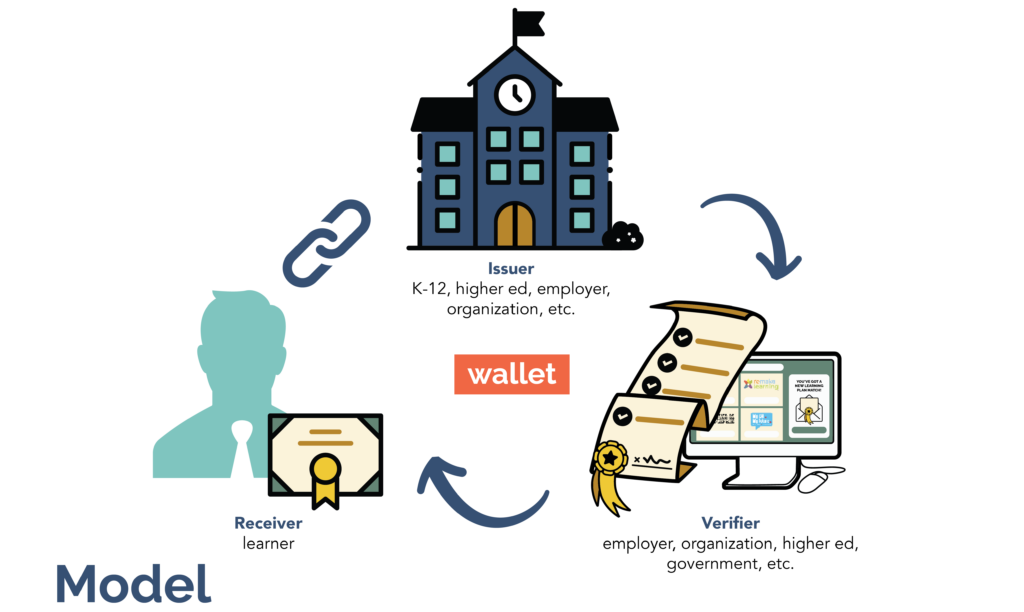
Matching and Aligning
The last step in the badging and credentialing process is to align the validated credential with industry (or higher education) needs. Lightcast’s Skillabi aligns higher education course outcomes with skills employers want. GreenLight Credentials and Territorium both, in addition to offering digital wallets to store LERs, look to match demonstrated competencies with employers through searchable de-identified records.
Companies like SkillStorm not only provide learning experiences but also maintain strong partnerships with technology firms to build pipelines of high-quality future employees.
Higher education has also attempted to allow competency-based and performance assessment results and artifacts in lieu of typical admissions criteria. In the early 2000s, the Oregon State University system piloted a Proficiency-based Admission Standards System to more accurately evaluate applicants. From 2015 to 2019, the CUNY and the New York Performance Standard Consortium ran a pilot with impressive results—attracting more educationally and economically disadvantaged students who ultimately attained better outcomes than similar regular-admissions peers. The Learning Policy Institute built a set of guidelines to support colleges and universities interested in making this change.

